
Franchise co-creator Nick Burcombe and Sony XDev’s’s John McLaughlin talk the key moments of the series
“It’s only really many years later when you have the benefit of hindsight that you look at the idea, the art direction, the soundtrack, the platform… and it’s all just perfect timing. Those moments don’t come along very often.”
– Nick Burcombe, co-creator, WipEout (1995)
WipEout hit 1995 with the force of an earthquake. Its sci-fi vision of armed anti-grav craft battling it out at 1,200kph for gold and glory on twisting, vertigo-inducing race tracks couldn’t have been further removed from the quintessentially English pub in which it was conceived. Yet it felt perfectly in sync with the world it roared into like a supercharged sci-fi colossus.
Birthed in Liverpool, England and deployed on PS One’s bleeding edge tech, WipEout dropped into the eye of a raging cultural storm that was gripping the United Kingdom. Yet while it embodied the zeitgeist of ‘Cool Britannia’ – a celebration of the country’s beautiful collision of movies, music, art, club culture – its impact wasn’t restricted by geography. Cool Britannia’s epicentre was the British Isles. WipEout’s was anywhere a PlayStation was hooked up to a TV.
How the future of racing was birthed in an English pub
WipEout was the child of a concept pitch and a vivid memory. The two met in a pub just outside Liverpool in the early ’90s, introduced by a pair of Psygnosis developers – designer Nick Burcombe and artist Jim Bowers. The drinking establishment was a regular haunt for studio staff of which Bowers and Burcombe were two. They’d regularly meet and bounce ideas of each other.
Years earlier, Bowers had created a concept movie of two wedged ships dogfighting along a race track, firing missiles at one another before soaring round a huge loop.
He’d showed it to Burcombe, who recalled the footage when regaling Bowers with a story of how he’d overcome a particularly difficult race in Super Mario Kart by turning the TV’s volume off and cranking up a trance track (‘Age of Love’ by Age of Love) on his hi-fi.
“I had a zen moment were everything flowed perfectly,” remembers Burcombe. That sense of exhilaration as the music reached its peak as he crossed the finish line “was the moment I knew I wanted to make a game that did that to you.”
He envisioned doing the same to Bowers’ concept, setting the piece to a Liam Howlett cover of surf track ‘Wipe Out’ that broke out into the Prodigy’s ‘No Good’.
“I think that was the moment we could both see immediately what the game could be,” Nick says. “Even if it was in our slightly sozzled minds’ eye.”
The concept was gold. But there were two other key elements that helped turn the concept into reality.
How the CD-ROM and the movie Hackers made WipEout a reality
In the early ’90s Psygnosis was making inroads in two key areas. Alongside researching CD-ROM technology on the belief it’d soon be the next big shift in the industry, its Advanced Technology Group art team were getting to grips with 3D modelling. The result was a pair of arcade shooters, Microcosm and Novastorm (the latter, designed from scratch by Burcombe, offered a heavier emphasis on sci-fi).
Unbeknownst to Psygnosis, Sony’s PlayStation console would also use the technology. Impressed by the studio’s output, Sony would soon buy the studio outright and put it to work creating a game for its debut games machine.
At the same time, Sony Pictures approached the studio to create a gameplay sequence for a scene in its movie Hackers. Bowers and Burcombe saw their chance to solidify the idea born from their recent pub conversation. A tight deadline meant there couldn’t be any fat, and the pair raced to refine their initial idea. Burcombe focused on vertigo-inducing track design while Bowers added pop-up walls that could be shot to access new sections of the level.
Their work paid off. So impressed by the concept, when the studio took delivery of its first PSone development kits, Burcombe was put in charge of creating its debut title. “I think [my boss John White] and Jimmy knew I had something in my head that I wanted to get out,” Nick theorises.
WipEout’s tracks, its setting & capturing the feel of anti-grav racing
Initial focus was on perfecting track design. Trackside details, the game’s overall tone and theme were secondary.
“I was much more concerned with the length of straight, steepness of elevation, frequency of undulations and the tightness or camber of chicanes and corners,” says Burcombe.
The designer also had a clear idea about the weapons pilots could use during the races, stating that everything initially designed made it into the final game.
The 2052 setting was picked because of its relative proximity to the modern day. Close enough to relate to (“it should still be recognisable. An arbitrary date – like 3231AD – would mean nothing to me”) but still offer a tantalising glimpse into future tech such as anti-gravity, which would be the cornerstone of WipEout’s feel.
“For some bizarre reason, I’d use vocal sound effects to really emphasise the weight of something or the inertia and drift,” recalls Burcombe of trying to convey the feeling of anti-grav to the rest of the team. “So I’d have to say it is a testament to the programming team who actually understood what I was trying to achieve.”
How the iconic soundtrack of WipEout came about
You can’t talk WipEout without discussing its soundtrack. At a time when licenced music was a rarity in the industry, it was a combination of Sony’s extra marketing heft – specifically tapping into Sony’s music label – and an early demo of the game that secured the title’s first artist. Burcombe headed to London to meet Phil and Paul Hartnol – better known as dance outfit Orbital.
“We got talking about [the demo we showed them] and they were really enthused.They took us down to the studio to play me a track they had called P.ET.R.O.L. After some remixing and reworking – this track actually ended up on the disc. I think once that contact had been made, it was easier to get some others.”
Leftfield and The Chemical Brothers soon followed, and the game’s success greenlit further collaborations in sequels with the likes of FSOL, Fluke, Underworld, Prodigy, Photek and more. “It was a who’s who of the ’90s dance scene,” Nick says as he runs down the artist list.
Restarting the project and finishing the game
Yet despite discussing the initial concept at length and fine-tuning it before full production began, creating a fully textured, real-time 3D game proved challenging, to the point that at one stage, the team had to restart the entire project, rethinking its approach to its production and programming pipeline.
“There was a moment when Ken Kutaragi came to the Liverpool studio and left believing we couldn’t make our launch dates,” Nick reveals. “But that was like a red rag to a bull for a team that had already worked very hard on it. The final few months of WipEout’s development was extraordinary, and I think being there for the European launch was a monumental achievement.”
“Looking back on it now, if it was just reverse psychology – it worked,” Burcombe admits.
Even when discussion shifts to the game’s launch, and acknowledgment of the fact that WipEout was on every early adopters’ wishlist come the PS One launch night at the studio’s local HMV, in typical developer fashion Burcombe mainly remembers the less enthusiastic critical responses.
“We were reading the 7s more than the 9s and nodding about the things that could be improved. It really focused our attention on what we needed to achieve for a sequel.”
After celebrating its success the team rolled up its sleeves and immediately started work on the next entry: WipEout 2097.
The improvements WipEout 2097 brought, and the price it came at
In the original game, weapons were deployed only to slow the competition down, give you time to overtake. In 1997 follow-up WipEout 2097, the studio introduced ship energy bars, meaning competitor – and player – ships could be destroyed if you didn’t recharge via trackside pit lanes. It added a new layer of strategy to races; WipEout’s version of F1 tyre changes mid-race.
Ships would now scrape up against walls, sparks flying, rather than coming to abrupt halt. While the original’s difficulty had its fans – including XDev’s John McLaughlin (“This is also why it is loved so much,” he says. “Once mastered you become one with the handling model, zipping through tracks, bounding over boost pads”) – the team wanted to make a more rewarding experience.
But the development turnaround proved creatively tough. Coming directly off finishing the original, the studio now had just less than eight months to develop and release the sequel. Despite 2097 bettering the original in every way, some of the original staff needed a break. As a third game went into production, Burcombe became a bystander to the franchise’s future. Nick eventually left Psygnosis – or Studio Liverpool as it was rebranded – to form his own independent label, Playrise, and work on recently-released console racer, Table Top Racing.
“I was able to stand back and watch as WipEout 3 launched, then Fusion on PS2 and then the PSP, PS3 and PS Vita versions.” But he remains upbeat about seeing the series continue without him. “Watching it evolve from afar has been great and I know so many of the people who have worked on all these different versions – improving and building on it each time.”
“I think it’s one of those games that actually conveys something of the team in it. It is a game with a soul and I think people get that,” Burcombe concludes. “The ideas, the graphic design, the music and the PlayStation all combined to make it perfect for that moment in time.”
The origin story of the WipEout Omega Collection
“It’s a unique game; there’s nothing else like it. It defined a generation.”
– John McLaughlin, XDev, Omega Collection
December 2016, Anaheim, California. A packed auditorium’s roars are only emboldened as the tease of a bass-heavy electronica track kicking in merges with stunning HD visuals to confirm WipEout is returning. The Omega Collection couples PS3’s fan favourite tag-team of WipEout HD and Fury to PS Vita’s WipEout 2048 for an upgraded, remastered package on PlayStation 4.
It’s a welcome surprise for fans. For John XDev’s McLaughlin – one of those lifelong franchise fans and brainchild behind WipEout’s rebirth – “it seemed a simple and obvious choice” to bring the series back.
Though he admits it couldn’t be his decision alone, he made sure he was in the best possible position when pitching the idea.
“I managed to pry [WipEout HD’s] codebase from IT and got it over to Hustle Kings developer EPOS”. Together with CEO and programmer Staffan, McLaughlin worked out how they could conceivably make a PS4 remaster happen and worked up a timeline for development. To achieve it, they’d have to reach out to Clever Beans studio (When Vikings Attack) to partner with. The pitch worked. WipEout was on its way back.
The original plan, according to McLaughlin, was just to work on the HD/Fury package. “But very early on in development we looked at the 2048 code,” he explains. The PS Vita launch title is the most recent entry into the franchise, but its fiction provided a glimpse into an earlier era of the Anti-Grav Racing League. “We thought it would be great to bring all of the tracks and ships from that game too.”
Artwork was reworked, details added. SFX was totally remastered. Split-screen was coded in – a first for the previously handheld only 2048 – and a couple of nods to the classic era added (“we set about bringing back a couple of defunct teams from yesteryear and brought back Tigron and Van Uber teams.”).
And today, some months short of WipEout’s 22nd anniversary, the futuristic racing franchise is reborn on PS4.
Back in 1995 there wasn’t anything like WipEout. In 2017, there still isn’t.
WipEout Omega Collection is available now both at retail and on PlayStation Store. Nick Burcombe’s latest racer with his new studio Playrise, Table Top Racing: World Tour, is available on PlayStation Store.
Your favourite race track from the franchise…
While Burcombe has the very first WipEout track, Altima VII, as a highlight (“I purposely put it first so you get that “wow” moment from the rollercoaster style downhill section”), it’s pipped by the game’s later course Arridos.
“It has a brilliant flow to it,” he remembers. “There’s some insane airborne shortcutting and great air-brake drift corners too. I also love that it looks carved into the landscape; the location seems plausible.”
For McLaughlin, it’s a pair of Sols – Sol2 from HD and Sol from 2048 – that are closest to his heart. “I love being thousands of feet in the air, zipping along at 1200KPH knowing I can fall off the edge at any moment. Real seat of your pants stuff!”
Your favourite WipEout team…
Maybe because it’s the default team come the ship selection menu of many a WipEout, but both Burcombe and McLaughlin favour the Federal European Institute of Science and Research, better known under their acronym, FEISAR.
Though McLaughlin “has some affection” for Triakis, Burcombe points out the story behind FEISAR’s naming may be why it’s his only choice.
“It was a bit of a political joke. The UK had just signed the Maastricht Treaty in ’92 and it was a sort of prediction on where the UK and EU might be heading.”
Your favourite music track…
Despite not making its WipEout debut until 1997 sequel 2097, Prodigy and dance classic Firestarter is what immediately comes to mind for both men.
“It’s embedded in everyone’s brain,” Burcombe sums up simply. “Even though the version in [WipEout 2097] is the instrumental, it’s so engrained in the UK psyche, your mind just fills in Liam’s incredible vocal without even thinking about it.”
Your favourite piece of fan appreciation…
Much as WipEout is a unique melting pot of near-future techand killer tracks, so too is fan love spread across mediums, styles and disciplines. Burcombe points to seeing WipEout tattoos (“it blows my mind that its influence is strong, they felt the need to etch it into their skin forever”) but also that he “still gets regular emails” from fans thanking him for getting them into PlayStation, dance music or becoming DJs themselves. For McLaughlin though, a homage to the in-fiction ships wins out. “I simply love this model.”
Celebrate WipEout Omega Collection’s launch with its iconic art and music
Listen to WipEout Omega Collection’s soundtrack on Spotify here, and check out 25 stunning pieces of unseen WipEout artwork from across the franchise’s history here.
Celebrate the franchise’s stunning artwork with a collection of WipEout League t-shirts and hoodies, available from tomorrow exclusively on PlayStation Gear. The tops which were debuted on stage at PSX last year, feature a variant of the iconic Anti-Gravity Racing League logo – which dates back to the original game. Check them out below and head to PlayStation Gear here.
Read more in the Extended Play series:



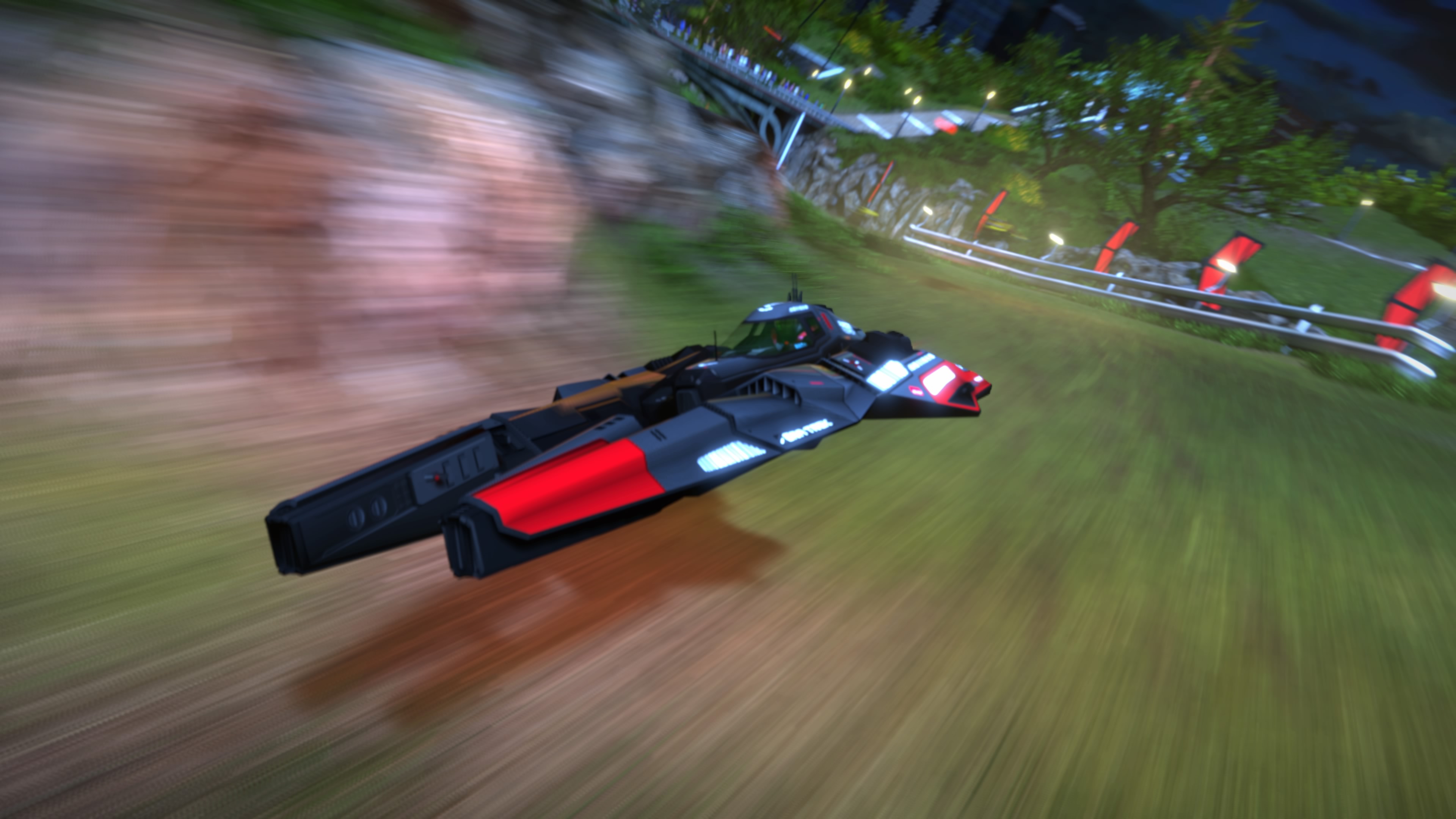

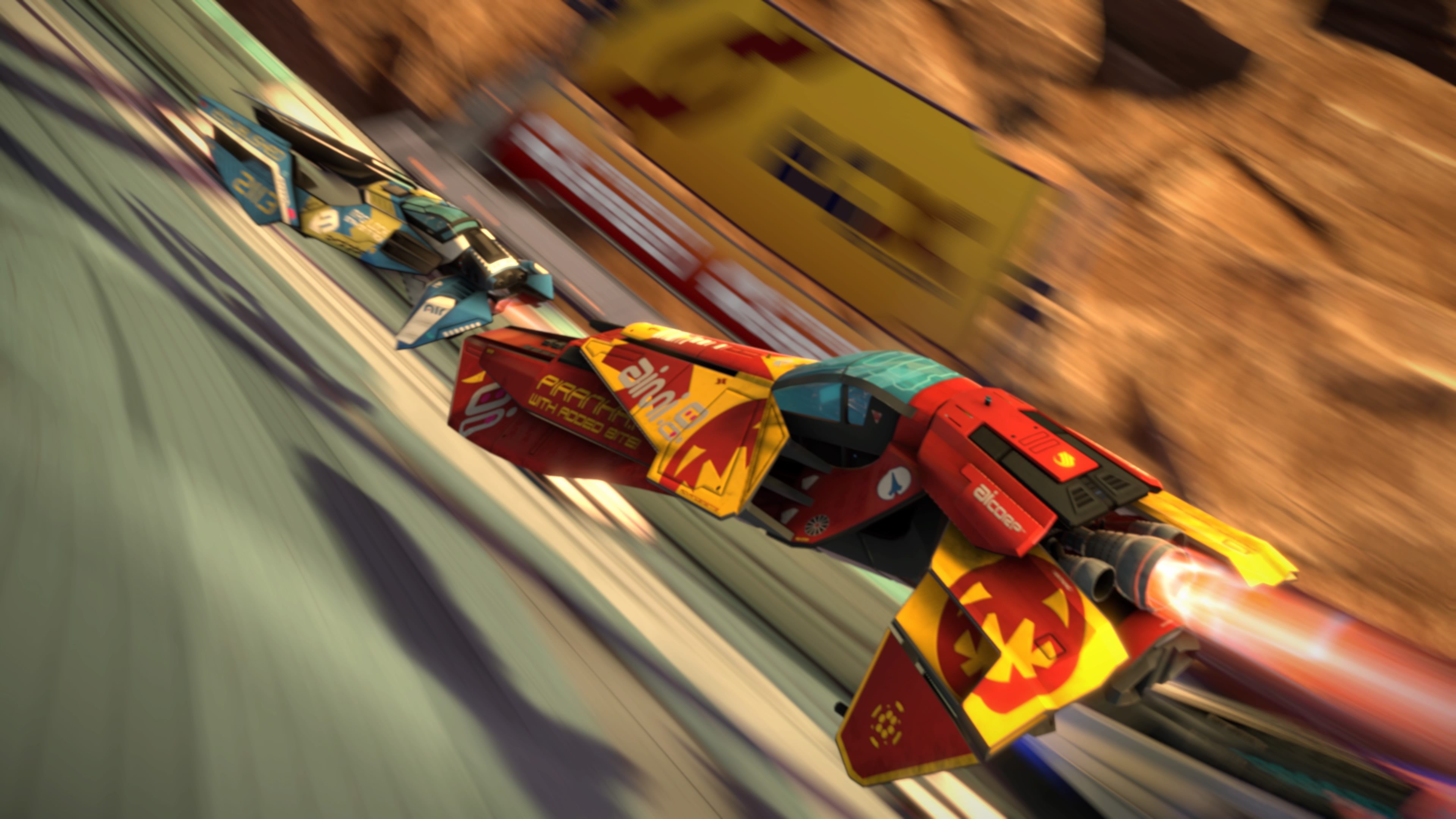

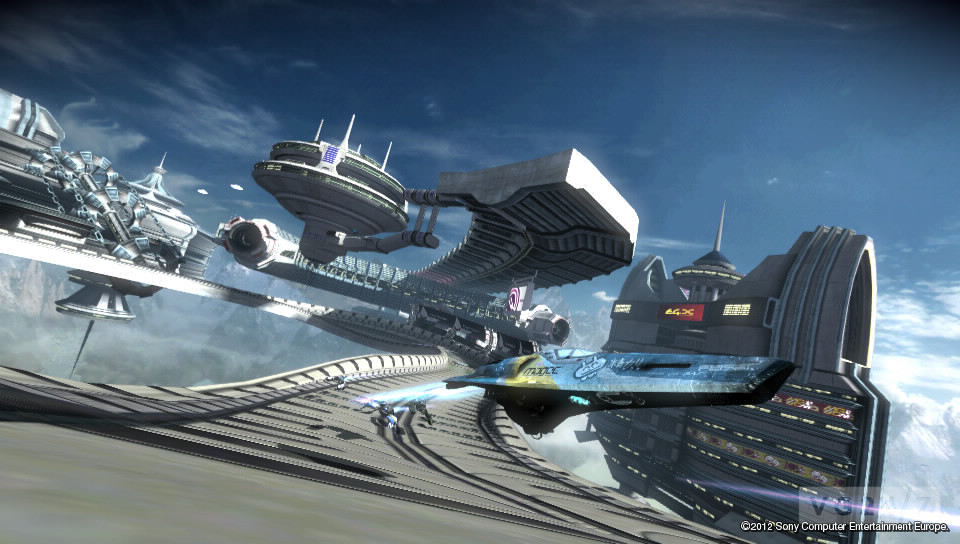
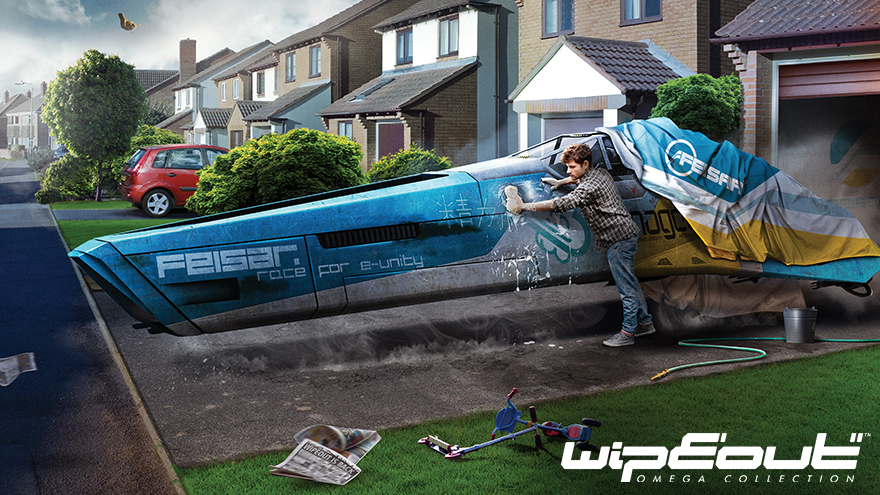
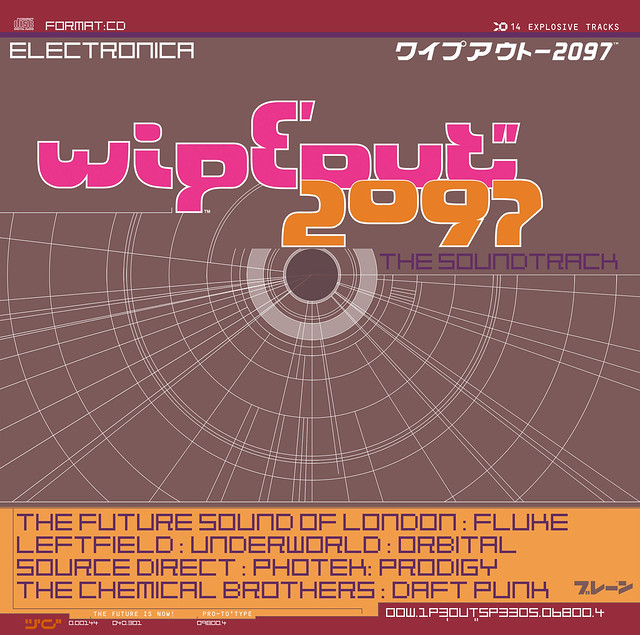

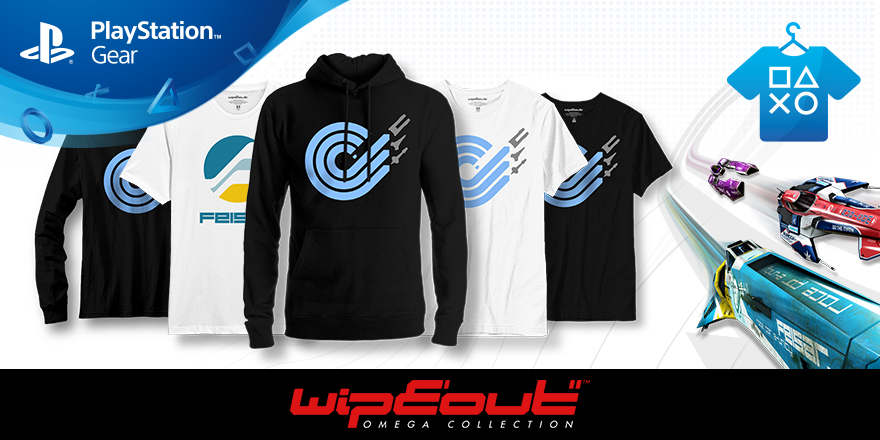
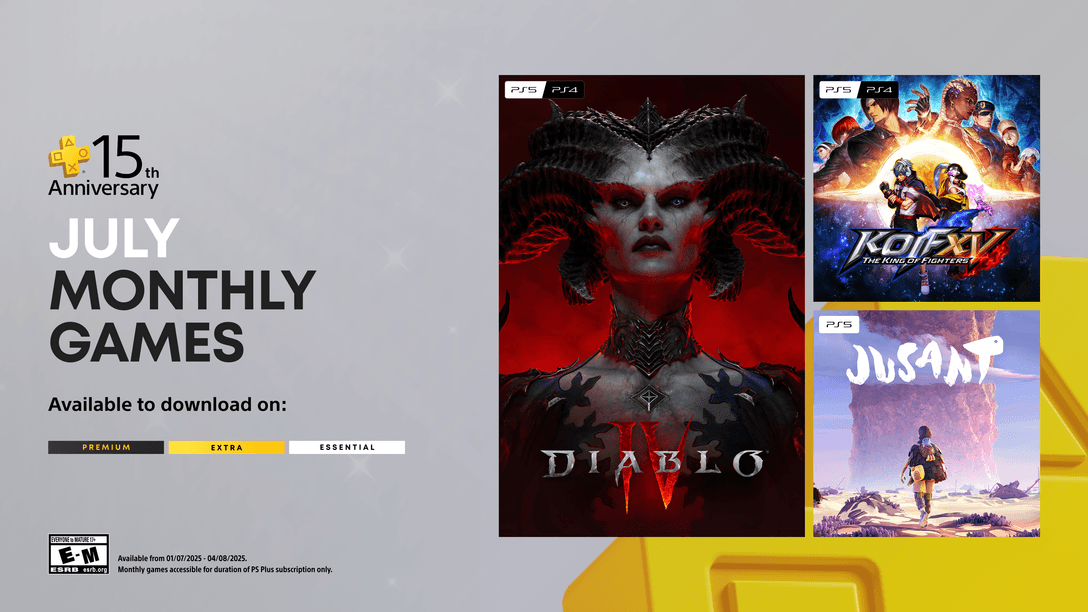

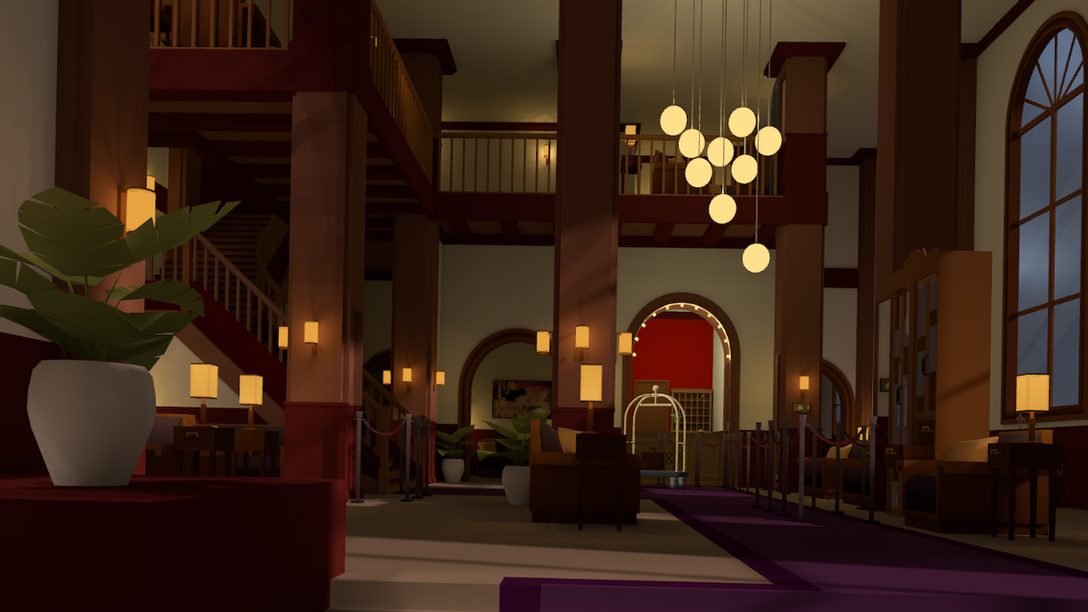





Join the Conversation
Add a CommentBut don't be a jerk!
13 Comments
Loading More Comments